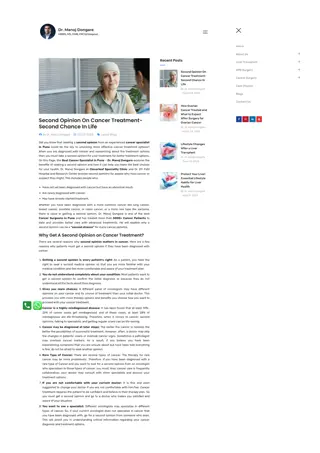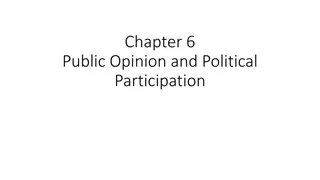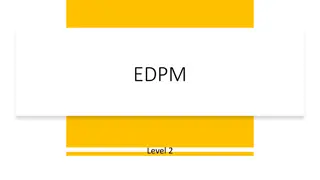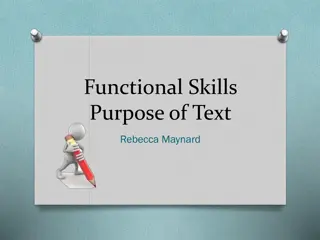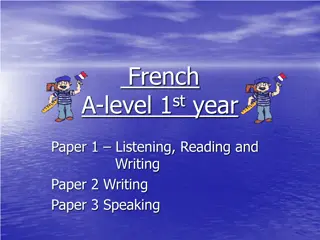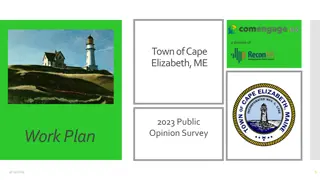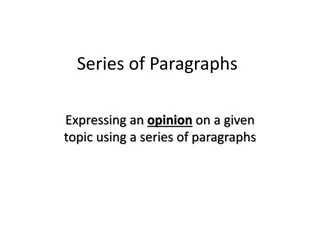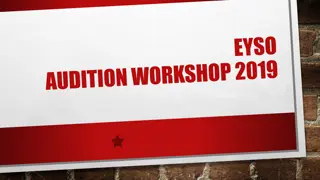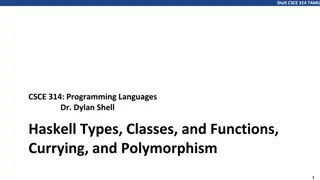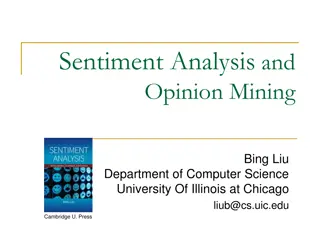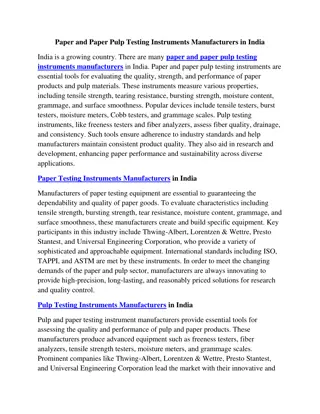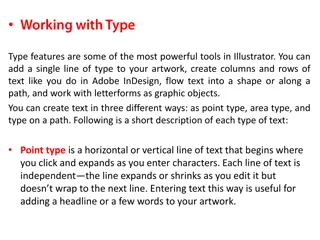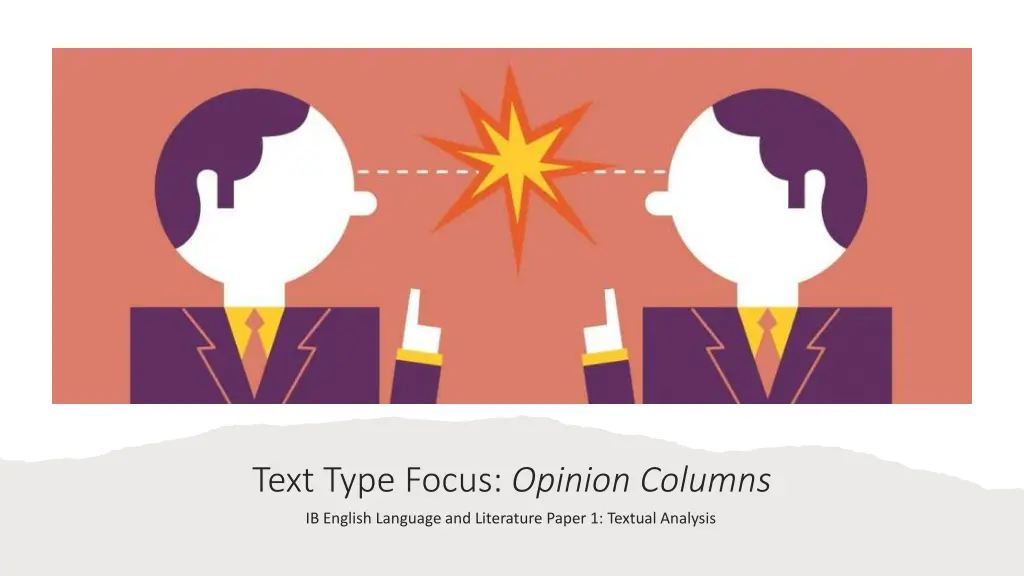
Analyzing Opinion Columns in English Language and Literature Papers
Explore the characteristics of opinion columns in IB English Language and Literature Paper 1, focusing on purpose, audience, use of images, solid arguments, and statistics. Learn how to differentiate between informative and persuasive formats, identify target audiences, assess supporting facts and statistics, and interpret images in opinion pieces.
Download Presentation

Please find below an Image/Link to download the presentation.
The content on the website is provided AS IS for your information and personal use only. It may not be sold, licensed, or shared on other websites without obtaining consent from the author. If you encounter any issues during the download, it is possible that the publisher has removed the file from their server.
You are allowed to download the files provided on this website for personal or commercial use, subject to the condition that they are used lawfully. All files are the property of their respective owners.
The content on the website is provided AS IS for your information and personal use only. It may not be sold, licensed, or shared on other websites without obtaining consent from the author.
E N D
Presentation Transcript
Text Type Focus: Opinion Columns IB English Language and Literature Paper 1: Textual Analysis
Purpose Purpose The purpose of an opinion piece is to engage the reader in a topical issue or debate of the day. The purpose may be to sway the opinion of the reader, so the piece might have a persuasive purpose. However, the piece may also be opening the reader s eyes to two sides of a debate. In this case it may be informative or descriptive rather than persuasive. Study the format of this opinion piece about text messaging. How does the format help you to ascertain the piece is informative rather than straightforwardly persuasive?
Audience Audience The audience of opinion pieces depends on the topic and the individual text. You can expect opinion texts to have both wide and niche audiences. Scour the complete text for clues as to the intended audience. The writer may use direct address to speak to a certain group of people. Pay attention to any extra information provided. For example, where a piece is published might give a clue as to the intended audience. When this text, by Michael Hoffman, was given in an examination, a small piece of contextual information was provided at the start. Additionally, The Observer is a famous British newspaper published on a Sunday. These bits of information should help you ascertain the audience for the text: British readers.
Images Images Though not a defining feature of this text type, many opinion pieces will be published with an accompanying image. The image will help you discover the writer s attitude towards the subject matter. Look at the beginning of this article, What s Wrong with Mcdonalds? How does the image support the opinion of the writer as conveyed in the first paragraph?
Solid Arguments Solid Arguments Opinion pieces should be full of solid arguments, supported by plenty of facts. This is especially true if the writer is trying to persuade you of the rights and wrongs of a given issue. Scan this extended extract from the same article about Mcdonalds. Can you find three distinct facts that support the writer s argument? In some texts you should be careful of assertion, which is the presentation of opinion as if it is fact.
Statistics Statistics As with facts, statistics help a writer make his or her case more convincing, especially as an opinion columnist may not be an expert in a particular field. Statistics might be dramatic or impactful in themselves, particularly if the number is large. Statistics ought to be cited or sourced, making them more credible. How do the statistics here, from an article by George Monbiot debating the merits of searching for water on Mars, both support his opinion and create an impact? You should always assess statistics for bias. For example, why does Monbiot state that sixty percent of water used in farming is needlessly piddled away (rather than, for instance, 40% of water used in farming is for effective irrigation )?
Anecdote Anecdote A common strategy you will encounter is for a writer to open with a personal experience, which they will relay in the form of a short story called an anecdote. The anecdote is designed to hook the reader at the start of the article it may bring life to the article, or contrast unexpectedly with the heading. Writers can also help the reader consider the real-life relevance of a topic through anecdote. How does Peter Bregman employ anecdote to hook the reader s interest at the beginning of this article?
Tone Tone One of the most important features of opinion columns, and one of the most difficult to decode, is tone. A writer s tone of voice reveals his or her attitude towards the subject matter. The writer s tone is normally conveyed through choice of words (diction), although other techniques such as the choice of imagery will also give you a sense of tone. How would you describe the tone of Romesh Ranganathan in this article about zoos? How does he create a particular tone or tones?
Concession Concession Opinion pieces are highly subjective and bias. They represent the opinion of a single person the writer about a given topic or issue. While the writer may be trying to convince you one way or another, he or she might also acknowledge the other side of the debate. This acknowledgement is called a concession. Concessions work to build credibility. They convey the impression that the writer is open to other points of view, even differing ones. Concessions help soften a writer s tone. This helps keep the audience on-side, even when the opinion may be controversial or unpopular. Near the end of his piece about zoos, Romesh Ranganathan concedes that not all zoos, and especially not all zoo workers, treat animals like prisoners. His concessionhelps soften the overall tone of his writing, which otherwise might come across as overly critical or negative.
Ending Ending Opinion columns should always end in a strong and certain way. Here are a few techniques to look out for: The writer may leave a final fact till the end, where it is likely to be remembered. The end of an opinion piece may also reiterate the writer s argument. Reiteration is a form of repetition that uses different words to restate the same idea. Pieces that end where they begin have a circular structure. The writer may appeal to your sense of humour. If the piece is designed to be persuasive, the writer may issue a call to action at the end, such as you can see at the end of the What s Wrong with Mcdonald s article.
Your Turn Study this text, an opinion piece by Michael Hoffman. Answer the guiding question: How does the writer of this text seek to interest the reader in his opinion about speaking foreign languages?

